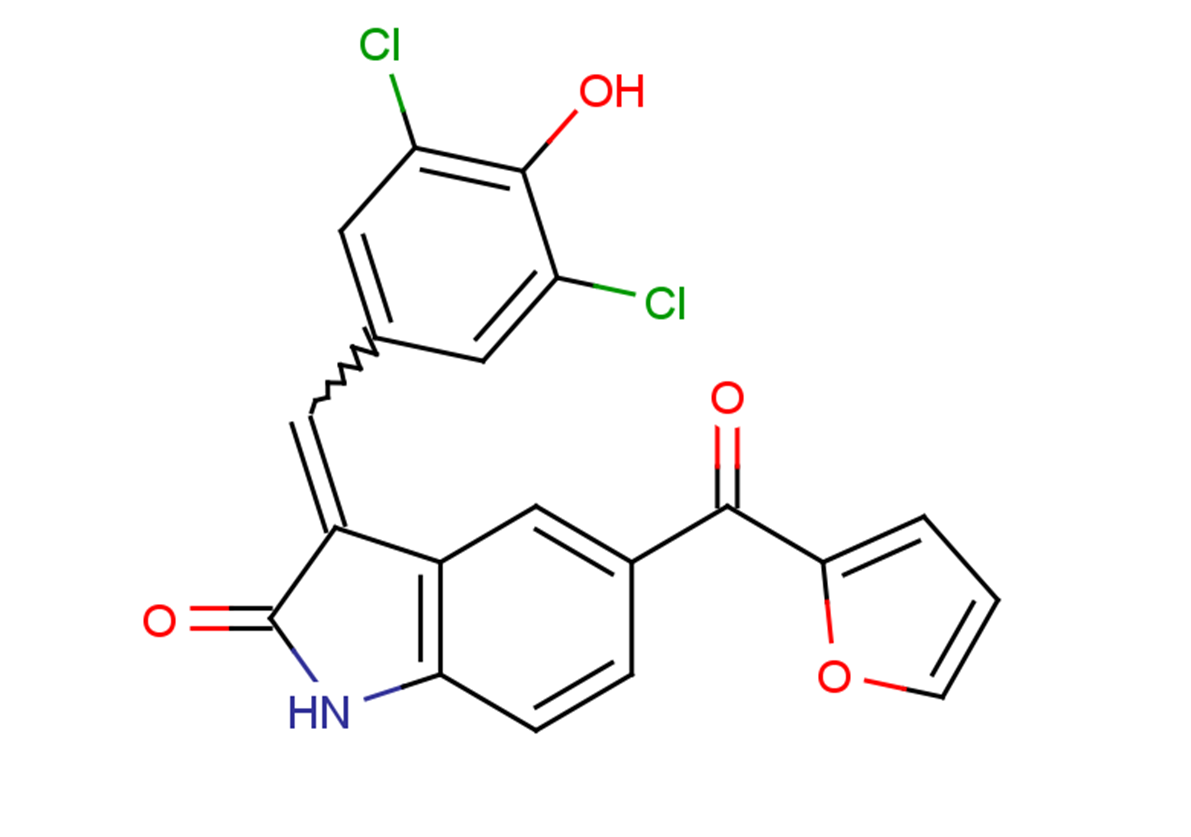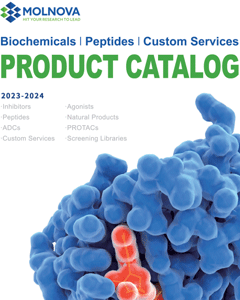
GW406108X (b)
CAS No. 265098-01-9
GW406108X (b)( —— )
Catalog No. M24176 CAS No. 265098-01-9
GW406108X(Z/E) is a mixture of different configurations of GW406108X, which is an inhibitor of Kinesin-12 and ULK1 .
Purity : >98% (HPLC)
 COA
COA
 Datasheet
Datasheet
 HNMR
HNMR
 HPLC
HPLC
 MSDS
MSDS
 Handing Instructions
Handing Instructions
| Size | Price / USD | Stock | Quantity |
| 5MG | 272 | In Stock |


|
| 10MG | 408 | In Stock |


|
| 25MG | 612 | In Stock |


|
| 50MG | 918 | In Stock |


|
| 100MG | 1233 | In Stock |


|
| 200MG | Get Quote | In Stock |


|
| 500MG | Get Quote | In Stock |


|
| 1G | Get Quote | In Stock |


|
Biological Information
-
Product NameGW406108X (b)
-
NoteResearch use only, not for human use.
-
Brief DescriptionGW406108X(Z/E) is a mixture of different configurations of GW406108X, which is an inhibitor of Kinesin-12 and ULK1 .
-
DescriptionGW406108X(Z/E) is a mixture of different configurations of GW406108X, which is an inhibitor of Kinesin-12 and ULK1 .
-
In Vitro——
-
In Vivo——
-
Synonyms——
-
PathwayAutophagy
-
TargetAutophagy
-
RecptorKinesin-12| ULK1
-
Research Area——
-
Indication——
Chemical Information
-
CAS Number265098-01-9
-
Formula Weight400.21
-
Molecular FormulaC20H11Cl2NO4
-
Purity>98% (HPLC)
-
Solubility——
-
SMILESO=C1NC2=C(C=C(C(C3=CC=CO3)=O)C=C2)C1=CC4=CC(Cl)=C(O)C(Cl)=C4
-
Chemical Name——
Shipping & Storage Information
-
Storage(-20℃)
-
ShippingWith Ice Pack
-
Stability≥ 2 years
Reference



-
Lys05
Lys05 (Lys01 trihydrochloride, PS-1001)?is the water-soluble salt of Lys01, is a 10-fold more potent lysosomal autophagy inhibitor than hydroxychloroquine (HCQ); shows IC50 values of 3.6, 3.8, 6 and 7.9 uM for 1205Lu, c8161, LN229 and HT-29 cell line in the MTT assay.
-
XST-14
XST-14 is a competitive and specific inhibitor of ULK1 (IC50: 26.6 nM).XST-14 blocks autophagy by inhibiting the phosphorylation of ULK1 downstream substrates.XST-14 induces apoptosis and inhibits the growth of HCC cells.
-
Metformin-d6 hydroch...
Metformin-d6 hydrochloride (Metformin-d6 hydrochloride) is a deuterated form of Metformin that can be used to study Metformin metabolism in vivo, and is often used as an internal standard for Metformin.



 Cart
Cart
 sales@molnova.com
sales@molnova.com


